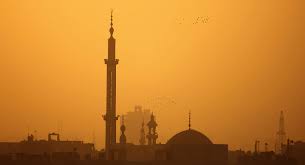Author: Kim Ghattas
Affiliation: The Carnegie Endowment for International Peace
Organization/Publisher: The Atlantic
Date/Place: January 25, 2020/USA
Type of Literature: Analysis
Word Count: 3100
Keywords: The Muslim World, 1979, Better Future
Brief:
The question what happened to us, haunts the minds of the people in the Muslim and Arab world. The author proposes that any effort to address this question and comprehend a brighter future for today’s Middle East should start with a sound understanding of the events in 1979. Prior to this period, wars and coups were confined in time and space, unlike the devastating intolerance of religious zealots and seemingly endless wars marking the region today. The world communities will not be able to grasp a better future for the region without a proper understanding of what happened, what was lost, and why the rivalry between Saudi Arabia and Iran contributed to this unraveling. Three major and independent events occurred in 1979: The Iranian revolution and consequent rise of Ayatollah Ruhollah Khomeini to power, the siege of the Holy Mosque in Mecca by Saudi zealots, and the Soviet invasion of Afghanistan on Christmas Eve which led to the first jihadist confrontation supported by the United States. The noxious Saudi-Iran rivalry was born out of the combination of these events. While the two countries were friendly rivals and twin foots of the US in countering communism in the region, the house of Saud admired the revolutionary government’s Islamic credentials. The condition changed when Khomeini once called the Saudi royals as “camel grazers and barbarians” and when he claimed Shiite’s leadership of the Muslim world, which is mostly Sunni. The two week long siege of the grand mosque in Mecca by a group of zealots also spread insecurities among the royal family as the house’s guardianship role failed. Meanwhile the Soviets invaded Afghanistan, which Riyad utilized as an opportunity to reinstate its credentials as a supporter of supposedly “righteous war” and to divert the energy of young Saudi zealots towards a foreign battlefield. A destructive rivalry over the leadership of the Muslim world emerged when Saudi Arabia and Iran manipulated and distorted religion in pursuit of regional power; indeed, nothing has altered the Arab and Muslim world as profoundly as the events of 1979. The moment transformed the region’s cultural and religious references, hijacked collective memories and spread frictions and suspicions in pluralistic countries from Egypt to Pakistan, as both Saudi Arabia and Iran worked to mobilize the masses to their sides with money, propaganda and proselytizing. Searching answers for “What happened to us?,” younger generations in the region are challenging the past generations and their parents for not stopping the unraveling. However, memories of a diverse and tolerant past are not lost, nor a belief and willingness to make a better future. Recent widespread popular protests across the region (in Iran, Iraq, Lebanon and Syria) are a sign of people’s demand to get rid of the separations imposed by the rival leaders of Iran and Saudi Arabia.
By: Jemal Muhamed, CIGA Research Associate.




